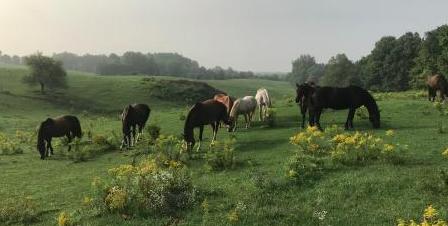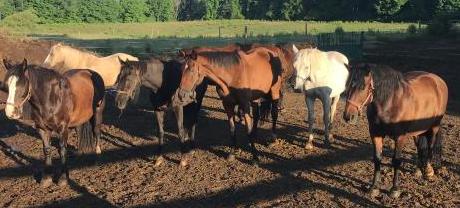Materials & Methods
Animals and location

Ten domestic horses (1 female (mare), 9 males (geldings)) from the same herd maintained at Churchill Chimes Equestrian Centre located in Toronto, Ontario, Canada, were studied. The horses were of different breeds and ages varying from 12 to 30 years. All were in good health, i.e. without lameness or acute illness, and were trained in the English riding style.
All horses lived outside 24/7 all year round. The horses were kept in a grass pasture during the night and brought into a dirt paddock during the day. The horses always had access to water, were allowed to graze ad libitum in the grass pasture, had access to hay in the dirt paddock and were fed daily.
Experimental procedure

Using continuous sampling each individual horse was observed from 7am-12pm for 16 weeks for 12 spontaneously occurring motor and social behaviours that are potentially lateralized. The direction (left or right) and the frequency of the behaviours for each animal was recorded using visual observation and an ethogram chart.
Behavioural responses to the presentation of 2 stimulus-induced sensory responses were recorded. A total of 9 trials that involved the presentation of a given sensory stimulus was recorded with each horse. See the table below for a list of behaviours. For more details on the behaviours please see the full thesis report.
Responsible for this page:
Director of undergraduate studies Biology
Last updated:
05/07/21
